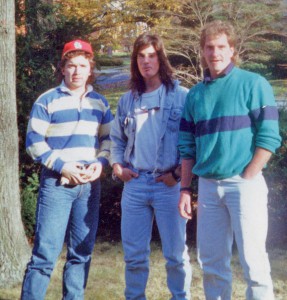
These ’90s-era styles are both comforting and comfortable. Our Special Report (p. 10) delves into the Normcore movement and its implications for our industry. For starters, experts say fashions from that era play to those who enjoy revisiting their youth, likely a period of less stress when the future seemed filled with great expectations. There are also those getting their ’90s fashions on and making the ultimate anti-hipster (thus totally hipster) statement of dressing like their parents once did and not caring a lick about current labels. Classic brands are catching a good buzz thanks to Normcore followers and ’90s-era nostalgia seekers, including the aforementioned Birkenstock, as well as K•Swiss, Nike, Keds and Dr. Martens, to name a few.
Another factor fueling the Normcore movement is the U.S. economy. In times of financial uncertainty, consumers look for authenticity, i.e. brands they know and trust. Hence, the current popularity of heritage brands and classic styling. Randy Watson, CEO of Justin Brands and the subject of this month’s Q&A (p. 12), says the heritage factor tied to its Justin, Nocona, Tony Lama and Chippewa brands has been key to its six-year run of double-digit sales and profits. The portfolio possesses an incredible 400-plus years of brand equity combined, and Watson foresees no let-up in growth this year. To be sure, the era that gave birth to grunge is in step with the heavy-soled logger and work boots offered by Chippewa and Justin.
Which brings me back to that photo of my brothers and me. Little did we know then that we were making a fashion statement that, some 20 years later, would be embraced again, not to mention scrutinized by a legion of trend forecasters, marketers, editors and bloggers. Back then, I leaned a bit preppy and Seinfeld-esque (I was wearing clean white Reeboks in this photo), while my two brothers spanned from sporty (Tom, a former college pitcher, had a preference for bright saturated solids) to rebellious (John often wore layers—jean jacket, flannel shirt and thermal undershirt—that would make Eddie Vedder proud).
Not long after this photo was taken the three of us began to go our separate ways—career-wise, fashion-wise and in terms of where we would call home. It grew to a distance that stretched from Maui to Manhattan. In fact, it was rare for the three of us to be photographed together after that. Our professions became equally disparate: editing a footwear fashion magazine in New York, building luxury homes in New Jersey (Tom) and, working as an electrician, John helped install Hawaii’s tsunami warning system, among other projects.
Sadly, the three of us will never be in a photo together again. John passed away suddenly, at age 49, last month. Undoubtedly, after 10 years living in paradise, his fashion sense had shifted to a more laidback, tropical vibe. (No need for layering there.) It wouldn’t have gone unnoticed by me. I couldn’t have resisted a few playful jabs, because just how rebellious can you look in Hawaiian print shirts? Likewise, John would have been taken aback by my current New York uniform of black, head to toe. Like most older brothers, he would have had a field day teasing me about my urban fashion aesthetic.
This photo, on the other hand, will always remind me of the time when we were still living near each other and our fashions reflected a similar closeness. Whenever I see someone with long brown hair passing by on a street, rocking a rebellious grunge look of a flannel shirt atop a thermal undershirt, jeans and heavy work boots, I’ll think of my brother John. It’s a fashion statement I hope lives on forever.




